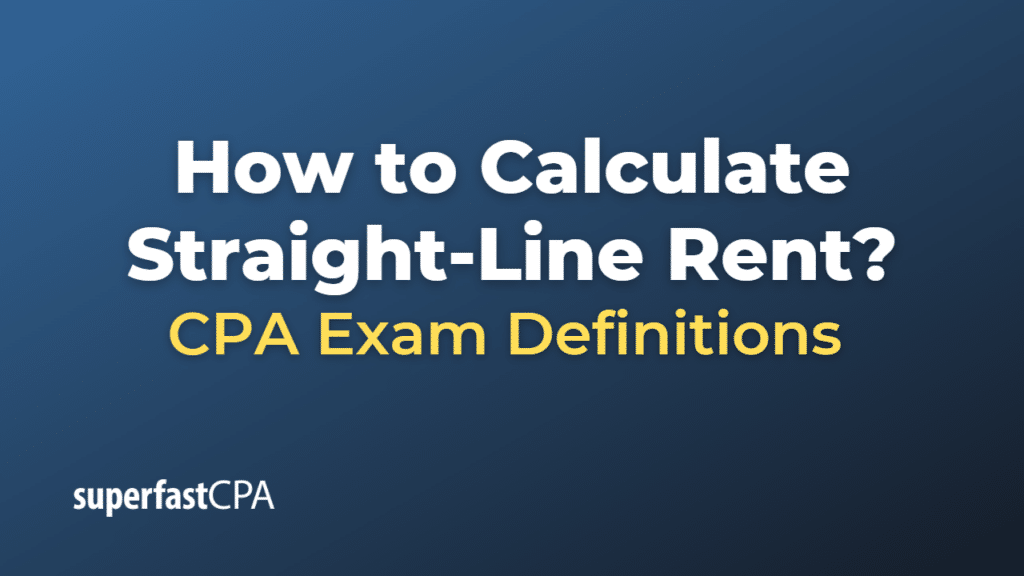How to Calculate Straight-Line Rent
Straight-line rent is a method of recognizing rental expenses uniformly over the lease term, even if the actual payments are not made on a straight-line basis. It is commonly used in accounting to comply with the “matching principle,” which states that expenses should be recognized in the same period as the revenues they helped to generate.
Here’s how to calculate straight-line rent:
- Determine the total lease payments over the lease term. This would include all recurring lease payments, plus any other non-recurring payments required by the lease (e.g., initial lump sum payment, end of lease payments, etc.).
- Determine the total number of periods in the lease. This is typically in months, but it could be in any time period depending on how often payments are made.
- Divide the total lease payments by the total number of periods.
Example of How to Calculate Straight-Line Rent
Suppose a business signs a lease for a warehouse, agreeing to a 5-year term with payments of $1,000 per month for the first year, $1,200 per month for the second year, and $1,400 per month for the remaining three years.
First, calculate the total lease payments:
- Year 1: $1,000 x 12 = $12,000
- Year 2: $1,200 x 12 = $14,400
- Years 3-5: $1,400 x 36 = $50,400
So the total lease payments over the term are $12,000 + $14,400 + $50,400 = $76,800.
The lease term is 5 years, or 60 months.
Finally, divide the total lease payments by the total number of periods:
Straight-line rent = Total Lease Payments / Total Number of Periods
= $76,800 / 60
= $1,280 per month
So, the straight-line rent for this lease is $1,280 per month. Even though the business is paying different amounts each month, for accounting purposes, they would recognize a consistent monthly rent expense of $1,280.
Remember to always refer to the relevant accounting standards (like US GAAP or IFRS) or consult with a professional accountant for the most accurate advice tailored to your situation.














